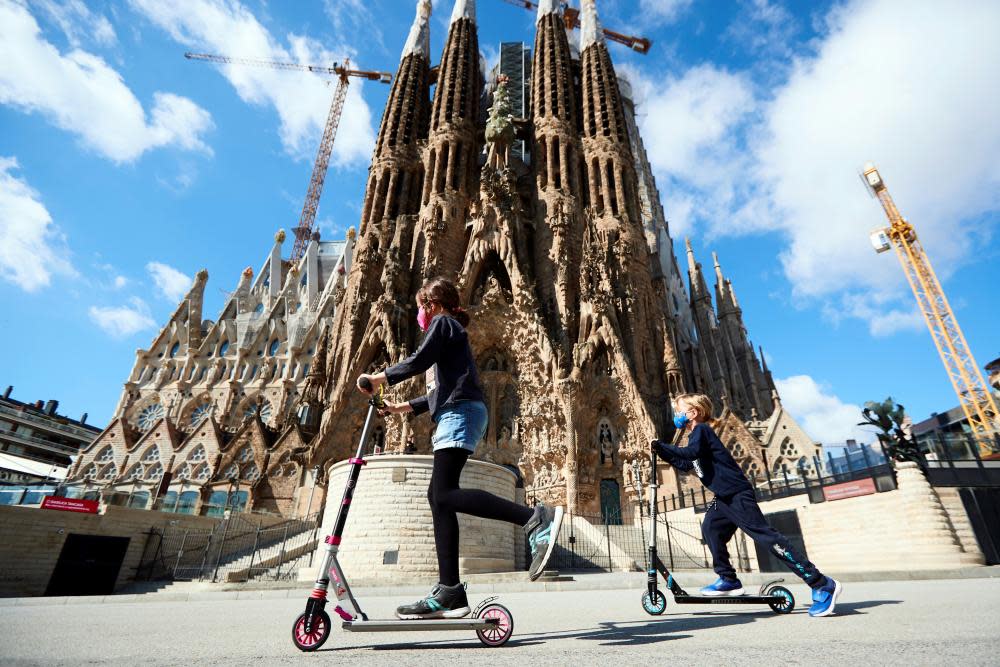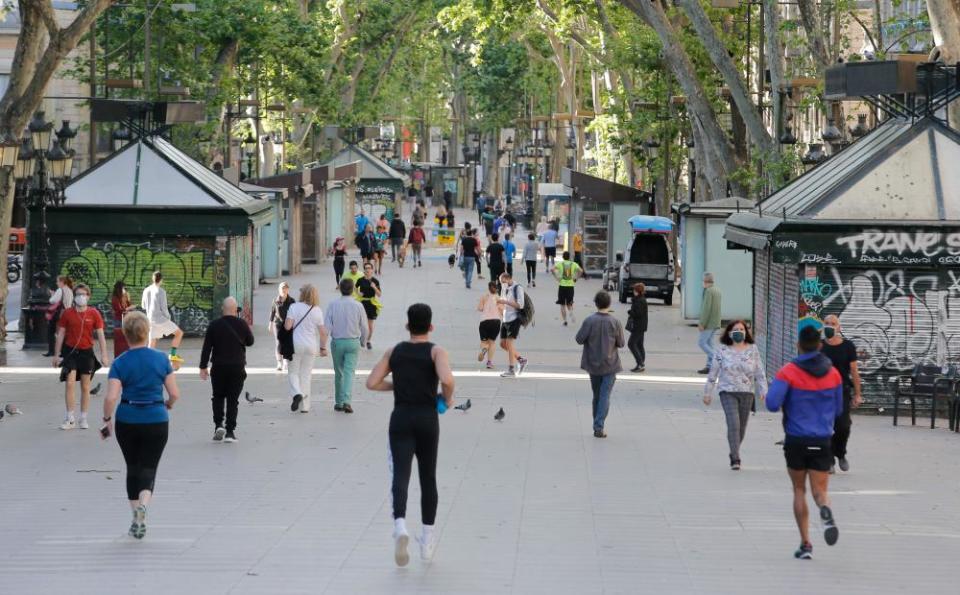Barcelona without the tourists: ‘We've reclaimed our city but inherited a ghost town’

For six weeks, the streets of Barcelona were deserted. Not a soul except the Deliveroo and Glovo riders and the occasional shopper, masked and gloved, making a foray to the nearest supermarket before scurrying back home. In a city with one of the highest population densities in Europe, there was no one to be seen.
Throughout this time, people here have shown an extraordinary and perhaps unexpected degree of discipline, stoicism and collective spirit in sticking to the rules of one of Europe’s strictest lockdowns.
It’s easing now, bit by bit. As of today, in most of Spain, bars with outdoor tables can open and people are allowed to visit each other’s homes. Some parks and beaches will open, too, but only for exercise. Sunbathing is not encouraged.
Not, alas, in Madrid, or Barcelona, where the authorities say we’ll have to wait another week, where the authorities say we’ll have to wait another week. It’s disappointing, of course, but at least we’re allowed out for a few hours a day, and nothing will ever erase the memory of that first taste of freedom, just over a week ago, when we were allowed out for exercise for the first time.
After the wettest April in a century, it was a clear, sunny morning. There was birdsong. You really hear the birds now there are so few cars. You hear so much, and there’s no need to shout above the traffic. A city looks different when cars no longer dominate the landscape; you see the line of the street, details in the architecture. And we probably haven’t breathed air as clean as this since before the industrial revolution.

People were out in numbers, in ones and twos, walking, jogging and speaking softly. Spain has a reputation as the noisiest country in Europe, but that morning everyone spoke sotto voce, as though afraid to break the spell.
There was something else too, something different that you couldn’t put your finger on at first. And then we realised: it was just us out there. People speaking Catalan and Spanish, as well as French and German and Urdu and all the many languages of this multicultural city, but they were all people who live here.
There were no tourists. None. No cycle tours, no Segways, no rickshaws, no one selling selfie sticks, no one trying to lure you in to eat a paella at an hour when no one here eats paella – indeed, at an hour when no one eats, punto.
It was just us. After decades in which tourism has grown exponentially, inexorably, to the point where the city’s 1.6 million inhabitants received 30 million visitors last year, they’d gone. All of them. We’d got our city back. Even La Rambla, long ago abandoned to the lurid forces of occupation, was ours once more.
Yes, it feels like liberation, but it doesn’t feel right. The bars and restaurants are shut, and many will never reopen. Nor will many other businesses for which tourism is their raison d’être.
“I passed by the Sagrada Familia and there were only four people there, all police, no passersby and, of course, no tourists,” said Pere Mariné, a native of the city’s Poblenou neighbourhood. “We’re enjoying the clean air, the calm, the silence, the peacefulness, above all because we’re not used to it. But we also miss the life of the city, the good and the bad, people in the street, the discussions in the Rambla del Poblenou. The city is better, cleaner, safer, quieter and more diverse, but with so much left to do.”
It’s all those things, but it’s dead. Mediterranean life is lived outdoors, in cafes and bars and in the squares where people old and young sit and talk and argue. We can go out, but there’s nowhere to go. Cicero said of war, they leave you a wilderness and call it peace. We’ve inherited a ghost town.
This is happening all over, of course. In Paris, Amsterdam, Venice, New York and many other cities that suddenly find themselves without visitors.

“Venice was becoming like Disneyland without inhabitants,” says Alberta de Grenet who moved to the city when she was 11 and has lived there for 20 years. “Now you can see the city for what it really is, a place full of light, more a village than a city. I’m hoping we can learn something from this strange and totally unexpected situation.”
“In March, all of a sudden, all we heard was Dutch around us,” says Fulco Blokhuis, a native of Amsterdam. “Suddenly you could see the real beauty of the city centre, places we have avoided for years.
“We took our kids to the Wallen, the red light district. There were no stag parties, no tourists, no sex workers, no drug dealers. A memory of a lifetime.”
Already Barcelona city council is talking about reclaiming the city for its residents, even La Rambla and the beach – a city with tourists but not for them. The city authorities hope that many of the thousands of empty Airbnb holiday rentals can now be reclaimed and rented to residents.
In the meantime, the financial pain is going to be intense and tens of thousands of jobs are at stake. Right now we’re enjoying the peace and quiet, but soon we’ll look back to all the times we wanted the tourists to go away and leave us alone and think, be careful what you wish for.


